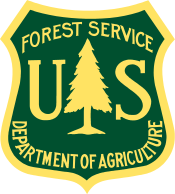Drought, Tree Mortality, and Wildfire in Forests Adapted to Frequent Fire
| Title | Drought, Tree Mortality, and Wildfire in Forests Adapted to Frequent Fire |
| Publication Type | Journal Article |
| Year of Publication | 2018 |
| Authors | Stephens, SL |
| Secondary Authors | Collins, BM |
| Tertiary Authors | Fettig, CJ |
| Subsidiary Authors | Finney, MA, Hoffman, CM, Knapp, EE, North, MP, Safford, H, Wayman, RB |
| Journal | BioScience |
| Volume | 68 |
| Start Page | 77 |
| Issue | 2 |
| Keywords | climate change and fire, fire effects and fire ecology, technical reports and journal articles |
| Abstract | Massive tree mortality has occurred rapidly in frequent-fire-adapted forests of the Sierra Nevada, California. This mortality is a product of acute drought compounded by the long-established removal of a key ecosystem process: frequent, low- to moderate-intensity fire. The recent tree mortality has many implications for the future of these forests and the ecological goods and services they provide to society. Future wildfire hazard following this mortality can be generally characterized by decreased crown fire potential and increased surface fire intensity in the short to intermediate term. The scale of present tree mortality is so large that greater potential for “mass fire” exists in the coming decades, driven by the amount and continuity of dry, combustible, large woody material that could produce large, severe fires. For long-term adaptation to climate change, we highlight the importance of moving beyond triage of dead and dying trees to making “green” (live) forests more resilient. |
| DOI | 10.1093/biosci/bix146 |




